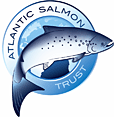Linking Hydromorphology to Ecology
Break-out session 3. Restoring ecology through hydromorphology (covering topic 6)
Group A
Group B
Group C
Final wrap up thoughts
Group A:
What is the most efficient cost-benefit approach for best ecological and hydromorphological outcomes?
- Perceived vs actual ecological benefit
- Site specific
- Role of science?
- All experiments
- Transferability
- Assessment
- Clearer objectives – success - monitoring
- Hydromorophology
- Ecology
- Socio-economic
- Predictive models
- Hierarchy approaches
- Incentive
- Regulation
- Holistic Approaches possible
- Land ownership is limiting
- How to prioritize?
- GIS-DEM, LiDAR, network model
- Where should habitats be?
- Are they there?
- Who does restoration?
- Scotland – fish biologists
- England – Natural England, River Trust
- States –
- many fish (allegedly!)
- East coast, WQ, low sediment issues
- Often fish biologists in regulation
- Sweden
- Restoration, acidification, restocking, liming, small scale habitat improvements
- What are benefits to wider biodiversity of fish restoration?
- Multiple-use
- Flood control
- Ecology
- Series of small projects artificially grouped into larger projects; pretend integration
- Western US
- Declining fish
- Political expediency
- Doesn’t deal with main problem, no water
- RBMP
- Prioritization
- But monitoring?
- Lack of tools for national strategy
- East Coast US
- Mussels (gulf of mexico)
- Role of subsidy of land use
- Benefits not near those paying costs
- Japan
- Downstream pays upstream
- Learning from failure
- Calfed
- pretends multi-function, but actually fish focused
- No feedback on performance, planning
- Governance
- No monitoring – none, too short (20-30 years)
- Justify spending
- Calfed
- Need for adaptive strategy?
- Need for adaptive strategy
- Lack system approach, prioritization and limiting factors
- No one giving up resource, unrealistic
- Win-win is a myth
- Fear of failure – needs to be reported to learn
- Mitigation vs restoration.
Group B:
How much restoration do we need to create a healthy ecosystem?
Redefine a “healthy” ecosystem as “functioning in a regionally relevant context”. Attributes of healthy ecosystem are
- Resilient
- Self-sustaining
- Stable but dynamic (not static)
- Diverse physically and biologically
- Connected
Approaches to estimating how much is enough?
- For species, identify bottlenecks and critical habitats
- Quantify functional groups or trait groups
- Focal species approaches
- Identify processes that must be restored to achieve goals
Enough is: spatial, temporal, and functional
- Limiting factors addressed
- Habitat available and accessible at important times
- At least some of each environments is functioning and connected
- Enough restoration of the right types that the outcome is greater than the sum of the parts
How do we know when we get there?
- Need measurable objectives
Group C:
How can we achieve effective monitoring and evaluation of ecologically-based river restoration efforts?
- Why on earth…?
- Timescale for restoration/monitoring/event capturing
- Ecologically and morphologically relevant
- Science documents, existing knowledge
- Quantification dej/ challenges
- Feedback during process
- Value of monitoring: compliance vs objective/target oriented
- Learning process
- Consider concepts of ecosystems (not just target species)
- Lack of baseline data; reasonable, meaningful data
- Budget
- External controls considering
- Post monitoring framework needed
- Future changes
- Maintenance
- 3 elements of monitoring/evaluation
- implemented (….)?
- reasonable, clear objectives?
- Long-term success?
- 3 elements of monitoring/evaluation
Workshop was successful in getting agreement on overall objective for monitoring/evaluation
- Process – considered in monitoring and assessment
- Ensembles f evaluation parameters
- Don’t be shy of quantitative measures
Facit:
- We basically know what to do but…
- Showstoppers include landowners, implementation, conflicts of interest
- Need to package the knowledge so that implementation is possible
Final wrap up thoughts
Final thoughts from the group
- Monitoring bank
- Capture experiences
- Project evaluation
- Responsibilities/funding
- Monitoring can be made compulsory
- Precedent from EIA
- Integrated research requirements
- Role of existing organizations and restoration centers
- Utility of failures
- Small uncoordinated projects
- Meta analysis
Next steps from the group
- Feedback to UKTAG Rivers – R. Owen
- AGU/EGU session
- Special issue of a journal
- Coordinated case studies?
- What about other regions?
Back to Ballater workshop page
|
Updated: 23 Jan 2024, Content by: HM
|






